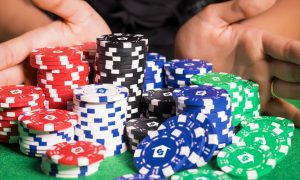Guest Post by Michael Chotiner
Professional kitchen renovators tend to have strong opinions about cabinet finishes, yet there’s surprisingly little consensus about what makes for a great paint finish. I’m a former custom cabinetmaker. One past partner favored the pristine, straight-from-the-spray-booth look; another—an old house aficionado—valued a patina that included faint traces of brushstrokes to suggest that the paint was applied by hand in an era when spraying wasn’t an option.
The fact is that professional-grade painted cabinet finishes are applied in at least three coats, and most fabricators prefer to apply as many of them as possible with a sprayer because it’s faster than brushing. Yet, at least one coat—usually the last touchup after cabinets are installed—is most often applied with a brush to save the hassle of masking the surfaces surrounding the cabinets.
What the Pros Say
Cabinet pros don’t universally agree on whether brushstrokes should be evident in the finished product. Some even take pride in applying paint with a brush that ultimately looks as if it was sprayed. The bottom line is that it’s up to the customer. Visible brushstrokes are a personal preference.
Brushstrokes can give vintage, classic style to your cabinets, and there are several strategies for achieving the effect. Most techniques are intended for raw wood cabinets and involve some spray-applied coats (which I wouldn’t recommend for do-it-yourselfers). But below, I’ve combined and adapted some brush-only techniques with a few tricks of my own that should work well for anyone with patience and a keen sensibility to achieve a professional quality paint finish on cabinetwork.
Step-by-Step Brushstroke Finish
- Remove cabinet doors and drawer fronts (if not glued) and take off all hardware.
- Fill all scratches, nail holes, dings and open grain with a suitable filler. In most cases, I like to use Durham’s Water Putty. Unlike most fillers, which shrink as they dry, Durham’s expands as it cures, locking itself into cavities and puffing up a little proud of the surface plane.
- Sand all surfaces to be painted with 180-grit sandpaper (start with a heavier grit if necessary and work up to 180) to attain a smooth surface with enough “tooth” to promote paint adhesion.
- Vacuum the dust from all surfaces; then, wipe each piece with a tack cloth.
- Set doors flat on blocks or on another horizontal surface like a workbench or table, to keep the edges elevated. I like to set them face down in preparation for the first priming step; after coating the back of a door and letting it dry, I can flip it over in preparation for painting the front without worrying that the more visible surface will be marred by contact if it hasn’t fully hardened.
- Apply BIN shellac primer to all surfaces with a china-bristle brush. If the finish coat will be off-white, ivory or a darker color, tint the BIN to match it closely. Start by brushing the primer across the grain; then, even out the coat by brushing with the grain using just the paintbrush tips.
To work faster, apply paint to larger surfaces like doors with a roller, then back-brush with the tips, working with the grain, to smooth and level the paint. Once the shellac begins to set, stop trying to work it. Give the shellac two hours—or however long your product’s label says—to dry.
- Sand the primed surfaces with 280-grit abrasive sandpaper to smooth out the heaviest brush marks, but you don’t have to remove them all. Repeat Step 4 to remove all dust.
- Apply two thin coats of alkyd enamel using the method described in Step 6. Sand and clean between the first and second coats. Whatever brush marks remained after you sanded the primer will telegraph softly through the enamel topcoats. Add a third coat of enamel, sanding beforehand, if the color and/or finish don’t appear sufficiently opaque.
The Argument for Visible Brushstrokes
In addition to imparting an aura of hand-crafted charm, many proponents of brushed-on paint finishes for kitchen cabinets argue that they mask joints and defects in wood surfaces that develop naturally as cabinets age. Brush-grade oil finishes are also easier to repair than sprayed-on coatings, should they become damaged through ordinary wear and tear. If you’re a fan of the classic look, brushed-on cabinet finishes have a lot going for them.
Michael Chotiner is a cabinetmaker and contractor who writes about home improvement topics for The Home Depot. He provides all kinds of tips and tricks from resurfacing cabinets to building your own cabinets. To see a variety of kitchen cabinet types and finish options, visit The Home Depot.






